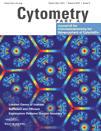|
Purpose:
|
In this study, we aimed to compare pre- and post-stimulation CD226 and TIGIT expression profiles to those of CD28, in human CD4+ and CD8+ T cell subpopulations, using flow cytometry. The impact of the CD226 single nucleotide polymorphism, rs763361, on cell surface CD226 expression and effector cytokine secretion was also examined. |
|
Conclusion:
|
In this study, cell surface expression of CD226 and TIGIT, by CD4+ and CD8+ T lymphocyte subpopulations, of healthy donors before and after stimulation, was investigated. The results obtained indicate that most naïve CD4+ and CD8+ T cells did not express CD226 and TIGIT, predominantly upregulating activating receptors following stimulation. Memory CD4+ T cells exhibited balanced expression of activating and inhibitory receptors, pre- and post-stimulation. In contrast, memory CD8+ T cells predominantly expressed TIGIT. Degranulating cytotoxic T cells were characterized by high and low expression levels of activating receptor and inhibitory receptor, respectively. The rs763361 TT genotype was associated with both a reduction in CD226 expression on the cell surface of CD4+ memory T cells (p = 0.004) and increased interleukin 17A secretion from activated T cells (p = 0.036, measured from culture medium). Taken together, these results suggest a mechanism through which rs763361 can affect T cell function, creating a predisposition for autoimmune disease development. Description of different expression patterns on CD4+ and CD8+ T lymphocytes provided in this work will lead to a more comprehensive understanding of the role of the CD226/TIGIT axis in control over T cell activation and suppression.
|

